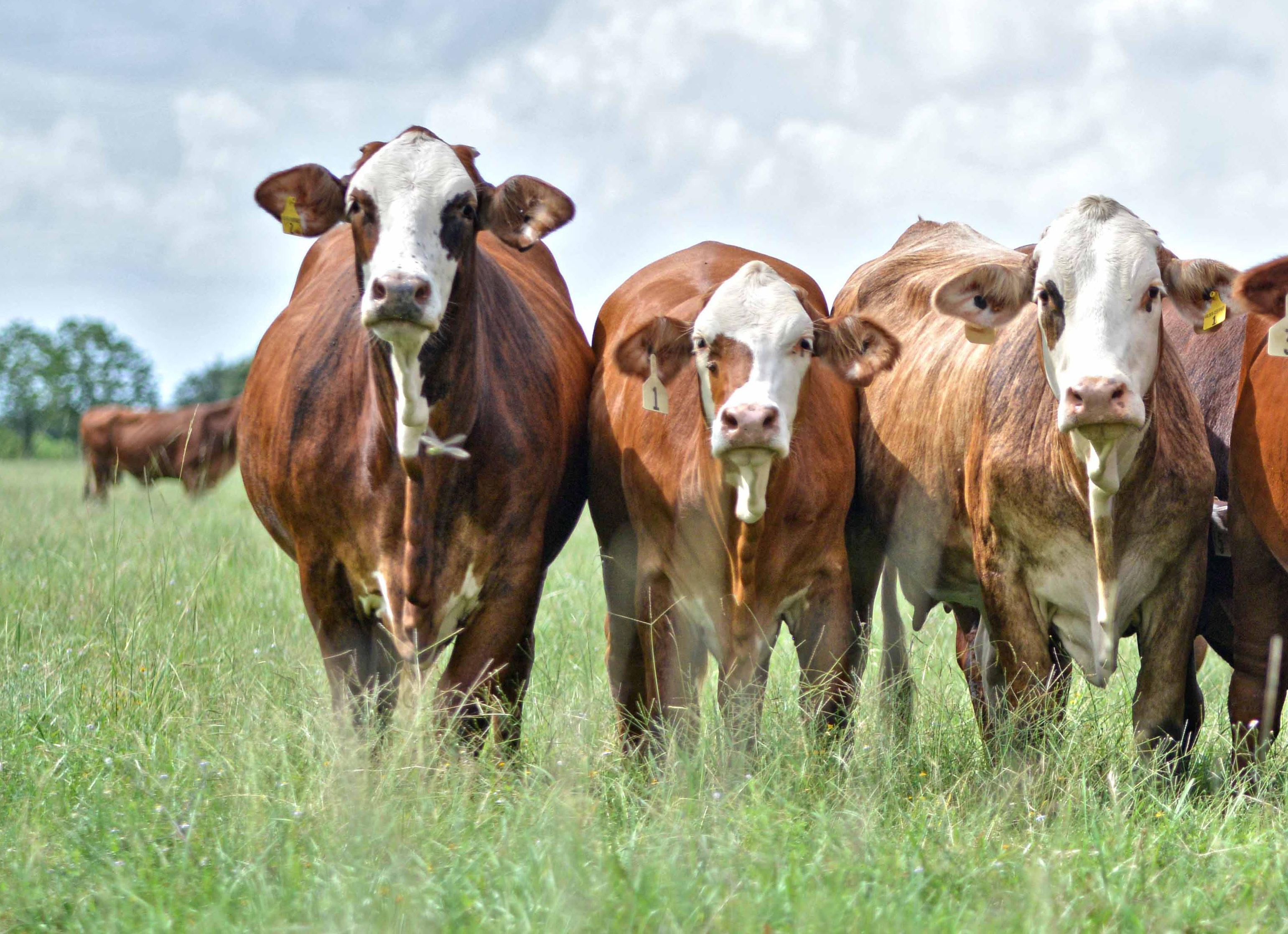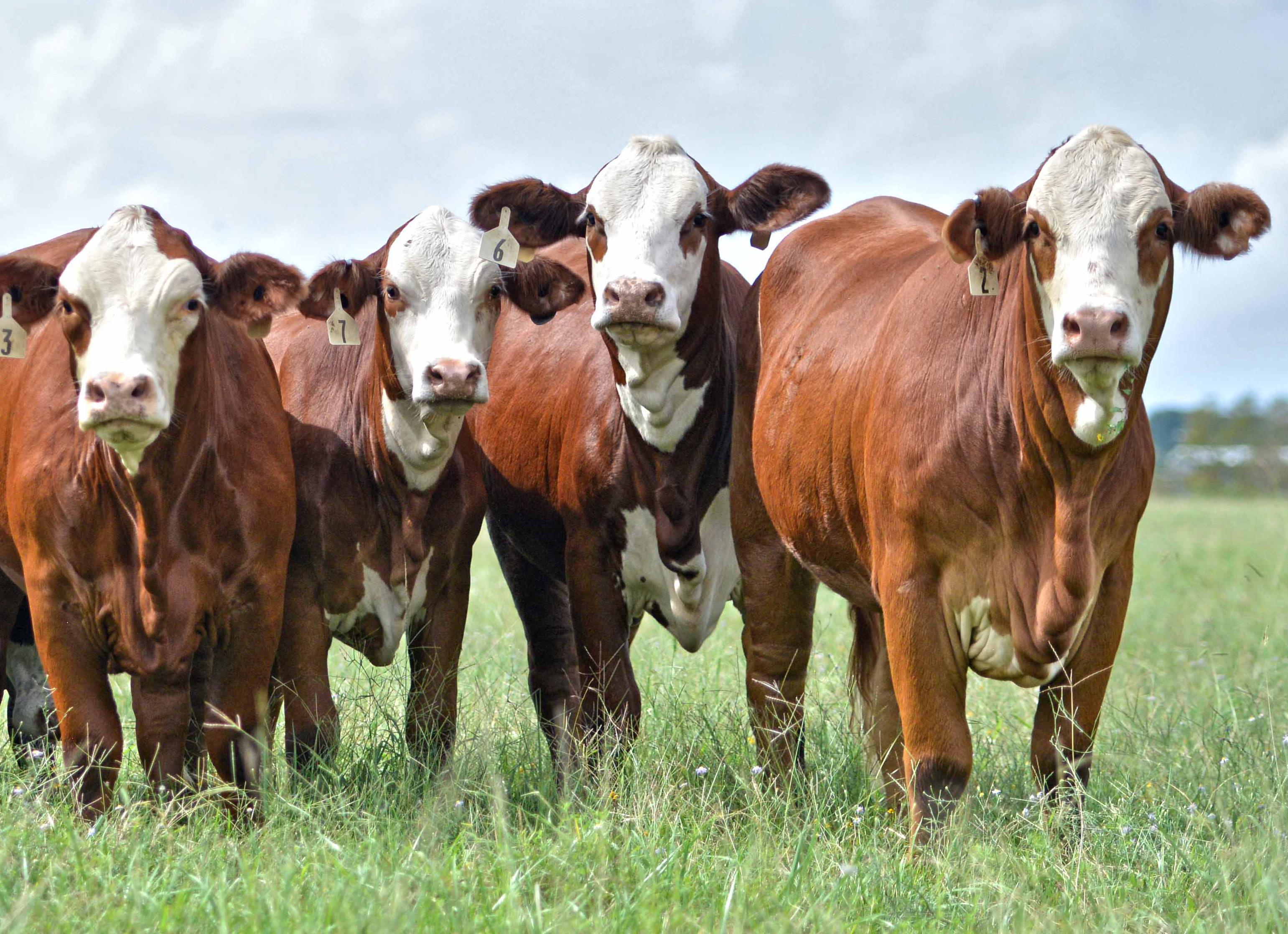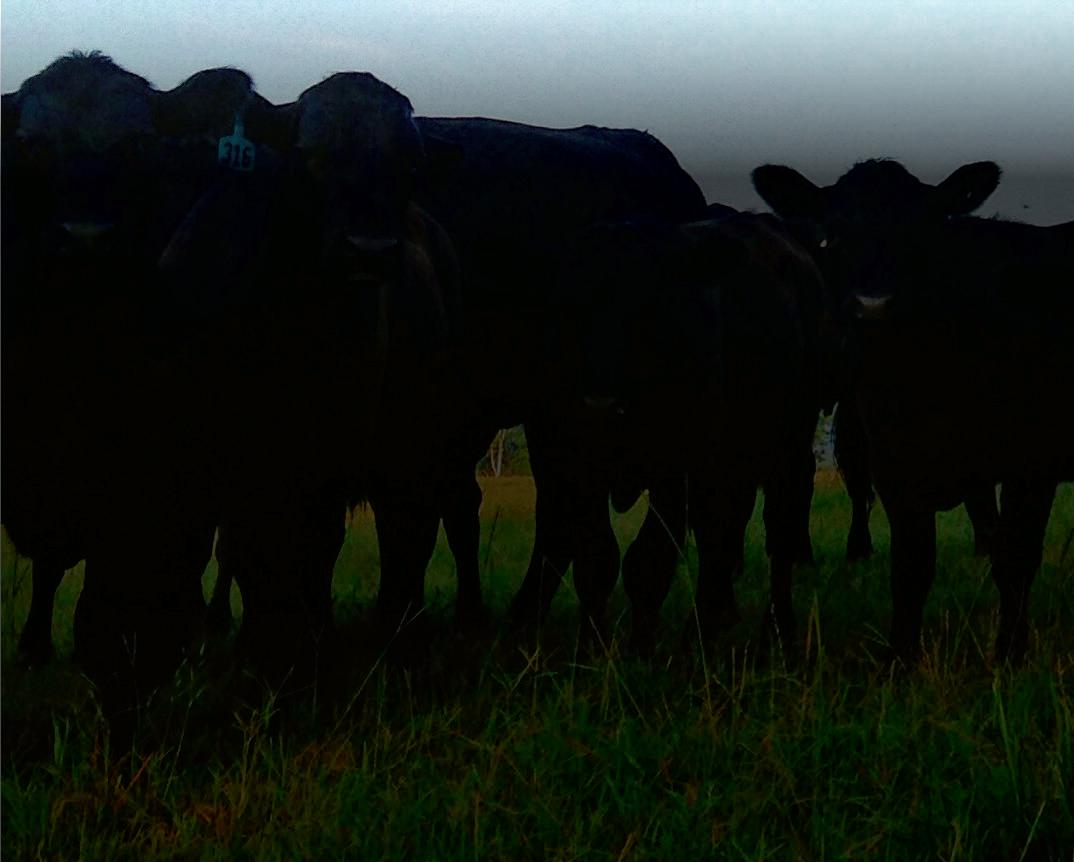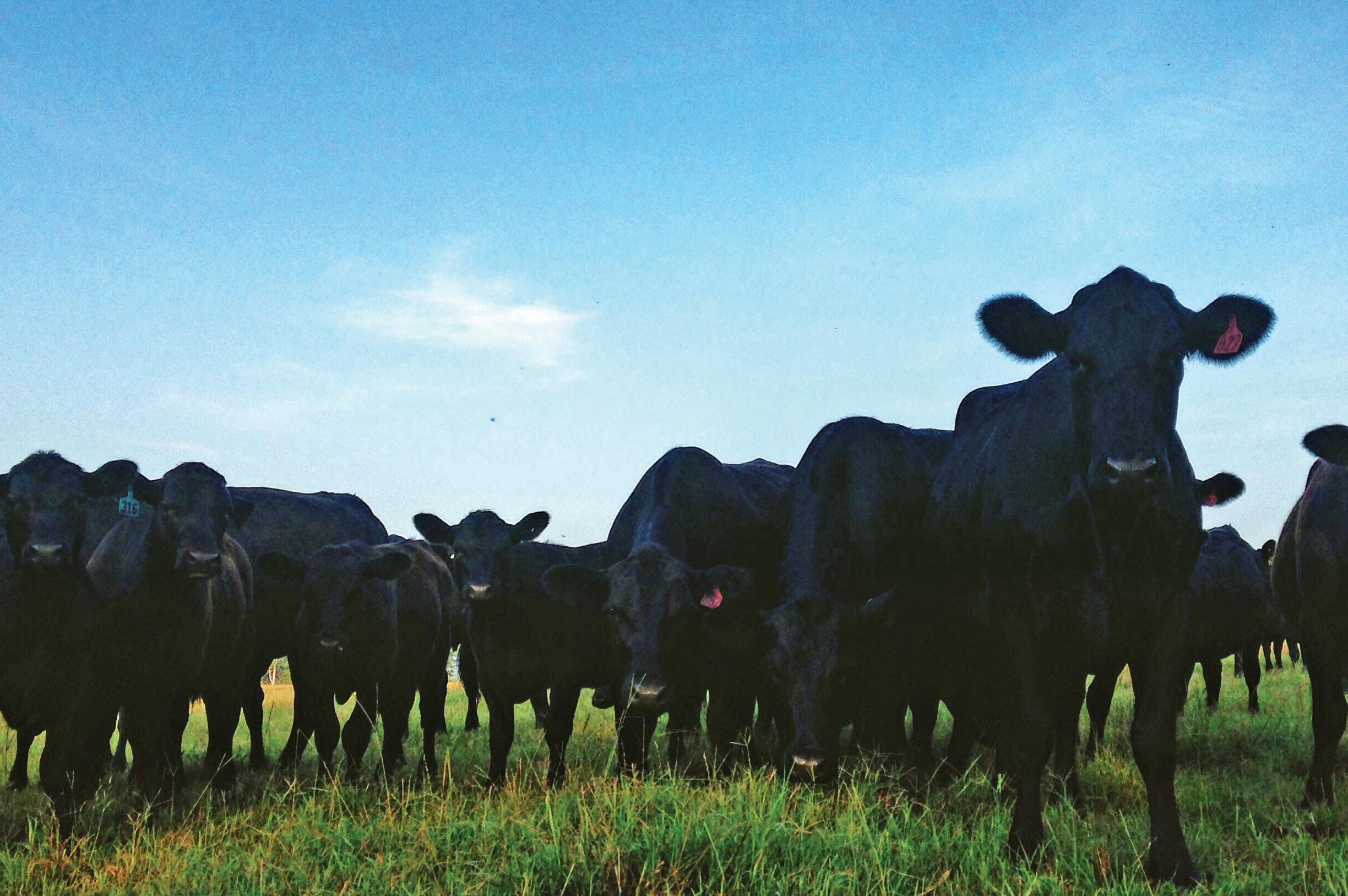
6 minute read
GAINING GROUD: GENOMICALLY ENHANCED EPDS
GAINING GROUND:
Genomically Enhanced EPDs
Advertisement
By Lauren Brockman, United Braford Breeders Summer Intern B rafords continue to add durability, profitability and growth to producers’ herds. Whether you are running a seedstock or commercial operation, Brafords have the ability to diversify and add value to your business. As more beef producers begin recognizing the reliability of these cattle, advancing the Braford breed calls for providing producers with cutting-edge technology.
Genomically enhanced EPDs (GE EPDs) have gained popularity among other breeds and are now available for Braford producers. The UBB offers 50K genomic testing through NEOGEN labs. There are three possible DNA samples to send: Tissue Sampling Units (TSUs), blood, or hair. Note that blood cannot be tested on twins and hair samples incur an additional $4 cost, said Dr. Jamie Courter, NEOGEN beef products manager. TSUs not only are the preferred method but also prove to be a more convenient choice, as it takes less time and can easily be done while collecting chute-side data.
The desire to increase productivity while maintaining traditional values is a feeling that beef producers know all too well. In the cattle industry, as with anything else in life, the ability to adapt is a sure-fire way to make your good operation even better. GE EPDs offer producers a way to better adapt to changes thrown at them and make positive differences within a herd.
GE EPDs are more accurate than standard EPDs, but environment and management still impact how cattle will perform. While genetic testing allows for a more accurate prediction of how an animal may perform, it is still important for producers to gather performance data.
The introduction of genomics into cattle selection is used to enhance rather than replace existing selection tools. It is easy to overlook the importance of consistently turning in performance data, as more focus shifts to genomics. Collecting data and evaluating it is crucial to see where a producer’s herd stands and help optimize production. While it is important to each individual operation, it is equally important to continue turning the data in to breed associations. Turning performance data in to associations helps other members and customers make more informed breeding decisions and helps calculate selection tools. Performance records and economic indexes can be considered the best criteria for beef cattle selection for seedstock and commercial producers. Industry standards and consumer preferences are ever-changing. The ability to make quicker decisions in your business yields long-term and profitable results. GE-EPDs increase the accuracy of young, unproven animals.

“Improving accuracy leads to less change in EPDs over time,” Courter said.
Genomically enhanced EPDs combine DNA markers with pedigree and progeny data, which allow producers to make more informed decisions for their herds. These keep the gold standard of the tried-and-true EPD but add an extra boost of confidence by introducing genomics.
“Once you add the genetic test, it’s basically the same as having eight to 33 progeny records, depending on the trait, already on file,” Courter explained.
The introduction of genomics into performance data allows for a decrease in generation intervals. When using a standard EPD, it could take two to four years before you get carcass traits on a bull or substantial reproductive data on a heifer. This information allows producers to make real-time decisions to improve their herds and have more confidence in young calves.
Introducing genomics does not cause all EPD calculations to go up, but it does give you additional indicators on the genetic merit of an animal causing it to be more reliable. Now, producers can analyze traits that are typically measured later in life, or at the end of a life cycle.
Traits such as weaning weight, feed efficiency and carcass merit have high economic relevance to producers but are hard to measure without genomics. Being able to select for these economically relevant traits earlier helps operations become more profitable. GE EPDs are able to give an estimate of that animal’s genetic merit on hard-to-measure traits the day it is born. The ability to have this data so early in an animal’s life can drastically change the genetic make-up of a producer’s herd.
“That decreases the generation interval and allows us to turn over those really good genetics faster,” Courter noted.
For commercial operations, genomic technology can not only improve its own breeding methods but also be reassuring when purchasing animals from seedstock producers. Genomic enhancements mitigate risk by supplying buyers with more accurate information. As seedstock producers begin incorporating genomics into their operations, businesses can have more confidence in their ability to provide commercial customers with animals that will best benefit their production needs.
Introducing genomics into an operation is an investment that will yield a high return. The advantages of using genomic technology can be tied back to one premise: the ability to make more accurate decisions more quickly. Genomics provides an opportunity to maximize profit and produce cattle with high-quality genetics.
Bred by necessity to handle adversity.
The Braford breed is one of the best kept secrets in the beef cattle industry. Braford cows are highly productive in southern production environments. Braford bulls work extremely well on your adapted cows and produce outstanding replacement females. -- Rodney Roberson, Thunderstorm R Cattle Co.



www.Brafords.org



t
Virtual Contest Results
Quiz Bowl
Harlie Smith Adeline Vidrine
Quiz Bowl
1. Baughman Crew - Aiden Baughman - Ava Baughman - Andrew Baughman
2. Texas Shoot Out - Braden Smith - Gracie Lambright - Hailey Sheffield
3. The Braford Bunch - Ellen Deshotel - Grady Richard - Molly McNabb 1. Adeline Vidrine
Junior Division All-Around
2. Harlie Smith 3. Claire Beth Baccigalopi
Photography Poster Livestock Judging
1. Harlie Smith 1. Adeline Vidrine 1. Harlie Smith 2. Claire Beth Baccigalopi 2. Adeline Vidrine 3. Adeline Vidrine
Intermediate Division All-Around
1. Ellen Deshotel 2. Hailey Sheffield 3. Braden Smith
Sales Talk
1. Adeline Vidrine 2. Harlie Smith
Photography
1. Ellen Deshotel 2. Gracie Lambright 3. Grady Richard 4. Megan Williams 5. Braden Smith
Poster Livestock Judging
1. Hailey Sheffield 1. Hailey Sheffield 2. Braden Smith 2. Aiden Baughman 3. Megan Williams 3. Gracie Lambright 4. Andrew Baughman 4. Ellen Deshotel 5. Gracie Lambright 5. Grady Richard

Sales Talk
1. Ellen Deshotel 2. Braden Smith 3. Andrew Baughamn 4. Ava Baughman 5. Hailey Sheffield
1. Miriam Hargrove
Senior Division All-Around
2. Gene Natali 3. Emily Deshotel
Quiz Bowl
1. The Carnival Crew - Seth Manuel - Garrett Manuel - Gavin Ortega
2. Braford Queens - Miriam Hargrove - Kalli Smith
3. Big Ballers - Audreanna Richard - Gene Natali - Brynlee Boudreaux
Photography
1. Kalli Smith 2. Emily Deshotel 3. Audreanna Richard 4. Karlie Ford 5. Miriam Hargrove
Photography
1. Stacey DesHotel 2. Carla Denison 3. Jennifer Vest 4. Dianne Owens 5. David Owens
Poster Livestock Judging
1. Miriam Hargrove 1. Gene Natali 2. Karlie Ford 2. Miriam Hargrove 3. Brynlee Boudreaux 3. Gavin Ortego 4. Madison Holcomb 4. Emily Deshotel 5. Gene Natali 5. Karlie Ford
Sales Talk
1. Miriam Hargrove 2. Brynlee Boudreaux 3. Emily Deshotel 4. Gene Natali 5. Kalli Smith
Adult Division
Livestock Judging
1. Babe Scott 2. Shelby Phelps 3. Michael Boudreaux 4. Danny Boudreaux 5. Jessica Richard






